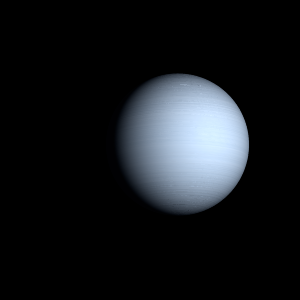|
|
Space Astro
|
Info for exoplanet "Inyn-ucox"
| Scientific (actual) data |
|---|
| Name | WASP-99 b |
| Planet status | Confirmed |
| Planet mass | 2.78 |
| Radius | 1.1 |
| Orbital period | 5.75251 |
| Semi major axis | 0.0717 |
| Orbit eccentricity | 0 |
| Inclination | 88.8 |
| Discovered | 2013 |
| Updated | 2018-12-17 |
| Tzero tr | 2456220 |
| Temperature (kelvin) | 1480 |
| Publication | Published in a refereed paper |
| Detection type | Primary Transit |
| Star name | WASP-99 |
| Right ascension | 39.9° |
| Declination | -50.01° |
| Mag v | 9.5 |
| Star metallicity | 0.21 |
| Star mass | 1.48 |
| Star radius | 1.76 |
| Star sp type | F8 |
| Star age | 1.4 |
| Star temperature | 6180 |
| Wikipedia article | WASP-99 b |
Back
| |
| Fictional info (?) |
|---|
| Suggested name | Inyn-ucox |
| Planet type | Large hot gas giant |
| It has the longest rotation period (445 days) of any planet in its solar system and rotates in the opposite direction to most other planets. |
| Atmosphere | Krypton | 69% |
| Ammonia | 25% |
| Ethane | 3.4% |
| Argon | 1.7% |
| Atmospheric pressure | 70 bar |
 |
| No known satellites |
| Google search for Inyn-ucox |
|
Website by Joachim Michaelis
|
|
|
|